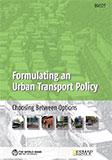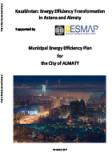Publications
About one-third of global energy is consumed in residential, public, and commercial buildings (collectively referred to as buildings), where it is used for space heating, cooling, ventilating, lighting, cooking, water heating, refrigerating, and operating electric and mechanical devices. Global energy use in buildings is expected to grow as cities in developing countries continue to modernize and per capita income levels continue to increase.
This guidance note outlines how cities can tap into a wide array of proven technologies, policies, and financing mechanisms to improve energy efficiency and capture cost-effective energy savings in buildings. It offers city leaders advice on how to get started in introducing energy efficiency measures, and provides lessons and examples from successful programs that have been introduced worldwide.
There are three primary ways in which energy efficiency can be improved in residential, public, and commercial buildings: (i) through improved design and construction techniques that reduce heating, cooling, ventilating, and lighting loads; (ii) through building upgrades and the replacement of energy-using equipment; and (iii) by actively managing energy use.
Related




